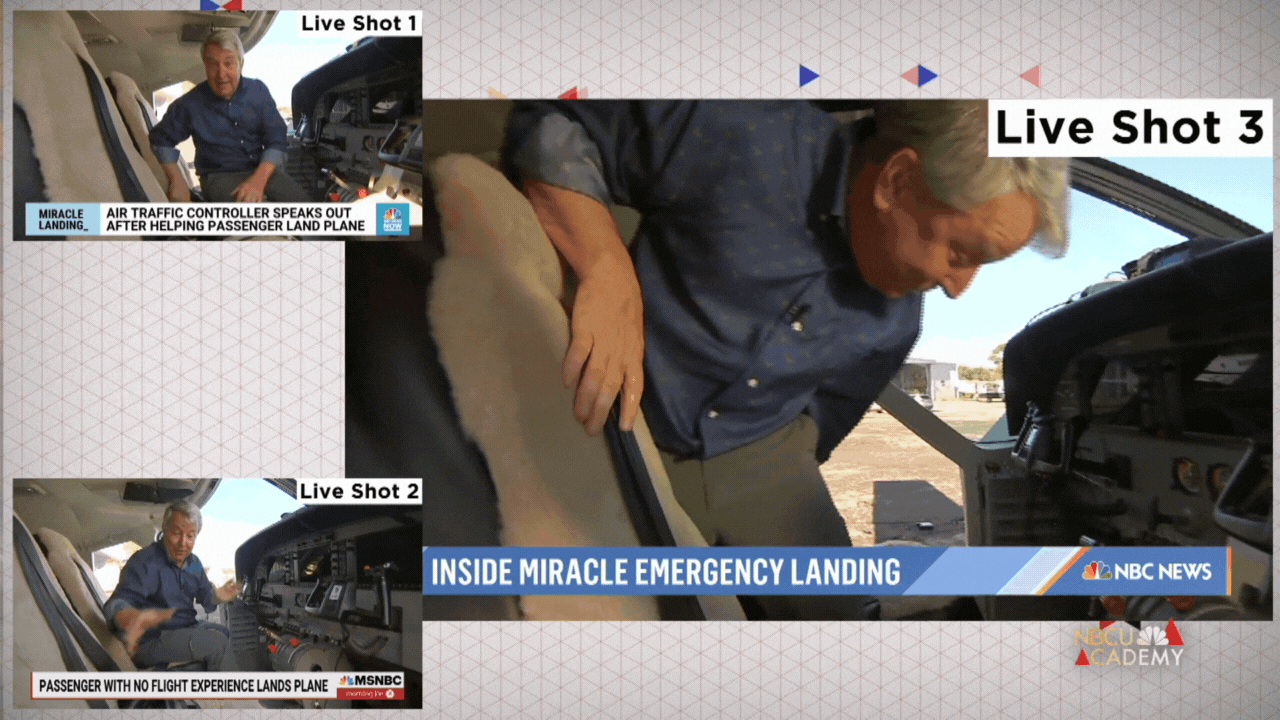Finding creativity and challenge in a live shot
Kerry Sanders: Often in a newsroom, you’re doing a live shot because the producer said she wants one. So you have the challenge to say to yourself: “How are we going to make this purposeful?” You now have to figure out why you’re going to go live and how you’re best going to use that live shot to advance the story.

Keep your live shot simple
Sanders: When you read a website or a newspaper article, you can go back and reread it. You only get one shot on television. It’s the first time people are hearing about something, so explain it to them as simply as possible. You’ve probably heard the expression “KISS” — “Keep It Simple, Stupid.” Make sure you’re thinking of the person who knows absolutely nothing about your story.

Writing tips
Sanders: “What are we going to do for the live shot?” That to me is the backwards way to do it. A lot of people will think that the live shot is an afterthought, as opposed to the linear progression of a story. When you sit down to write your story, I think it’s best is to write it top to bottom, so you can think about how the viewer is going to take it in.

Managing the stress
Sanders: The most important thing I learned is that there’s always another live shot, usually a couple hours later. If you mess one up, don’t worry about it, you’ll have another chance. And taking chances can be scary, but it’s best to try something you think is going to work. And if it doesn’t, that’s OK. You will learn from what didn’t work, and maybe not repeat it.
Stress is generally self-imposed. The way you take the stress out, you take a deep breath, you think about what you’re going to say. It’s so important that you’re not memorizing. You’re thinking about it, because if you’re thinking about it, then you know your material. And if you know your material, you can go anywhere you want.




